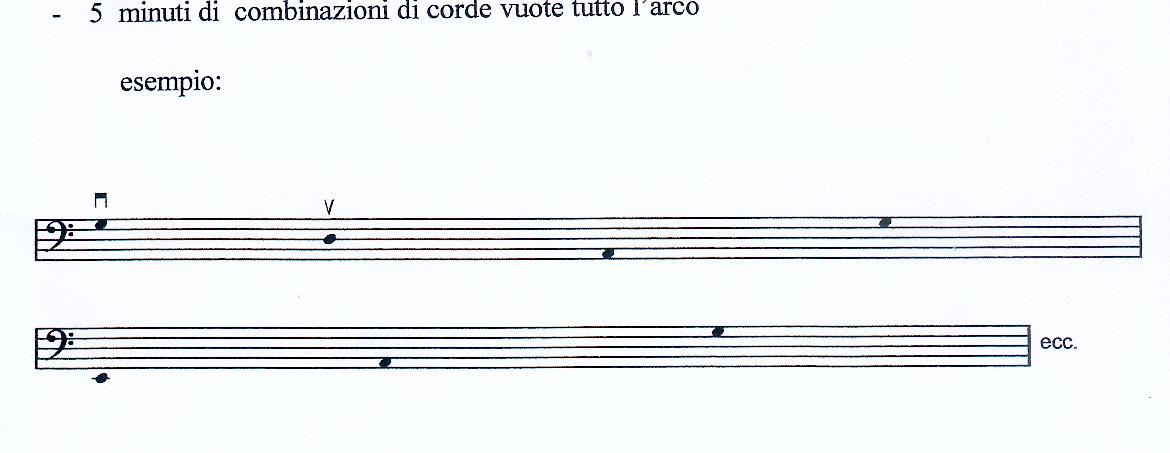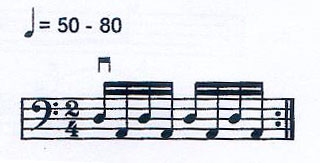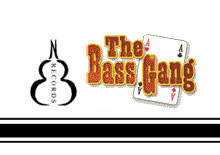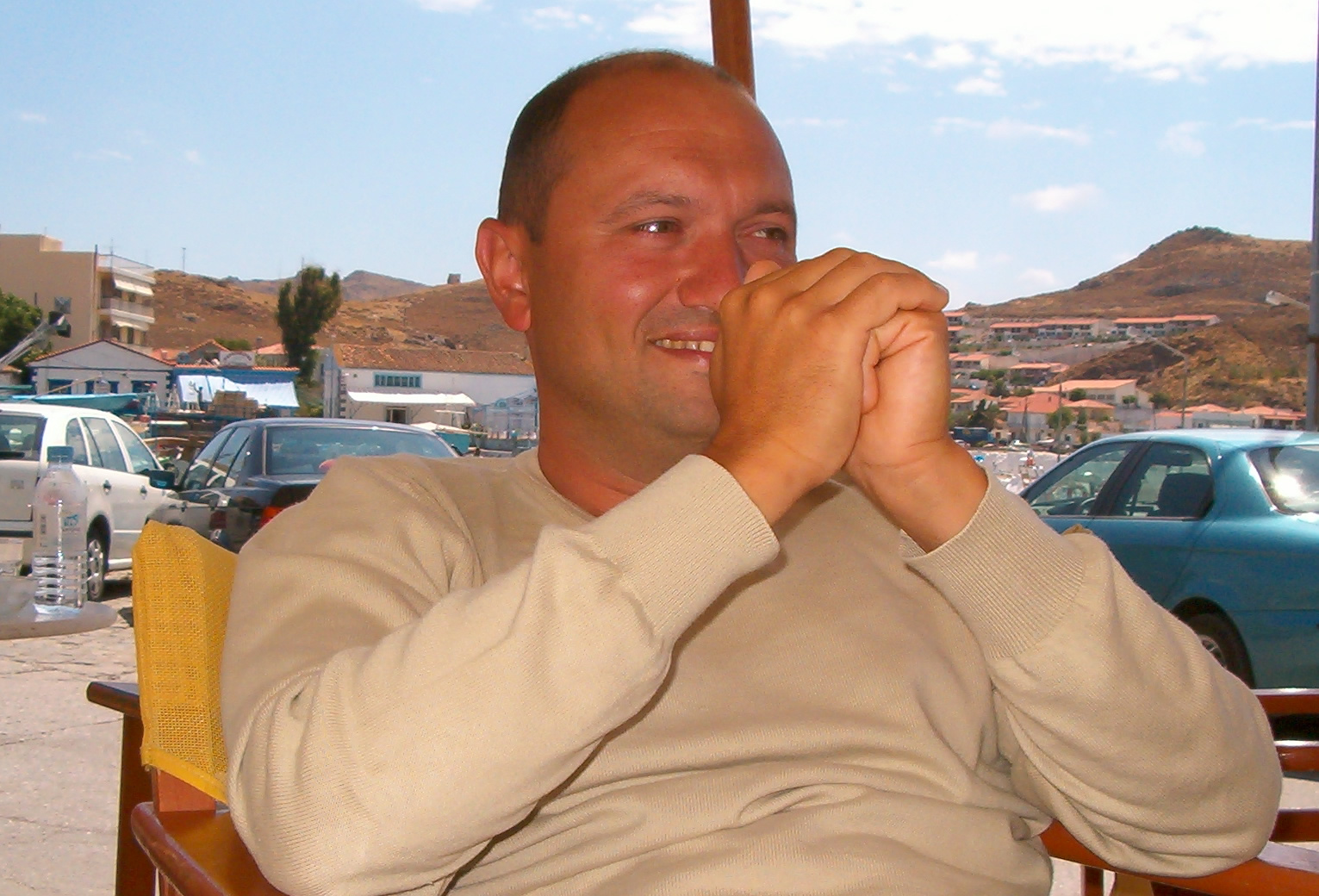New Horizons |
||||
|
| ||||
Alberto Bocini |
||||
NOTES ON THE STUDY OF THE DOUBLE-BASSI.General indicationsThe double bass positionPlace the double bass on the left side of the groin, in order to allow the trunk to move freely and not to inhibit the thrust coming from the dorsal muscles and the shoulder. Balance the body’s weight on both legs, which must be open to the same width as the pelvis. The feet must be slightly open while the knees must not be retroflexed. The angle formed by the bottom part of the double bass, in comparison with the surface of the stomach of the performer, must be of approximately 45 grades. Bow Holding and Right HandPlace the middle finger tip on the bow ring. The fore, ring and little fingers should be at the same distance. The fingers should be in contact with the nose surface and the bow. Close the thumb on the border of the nose’s internal cavity, so that the finger is flexed and the phalanx articulation is towards the bow tip. The arm should be extended and the elbow must not be twisted. The string movements are the result of two components. The first one is vertical against the string and is passive as far as concerns the performer’s muscle work. It is made by the weight of the arm. The second is horizontal and requires active work by the performer. It is made by traction and push on the bow. The lever created by the right hand (in which the fore and middle fingers give the power, while the ring and little fingers make the resistance and the thumb the centre) compensates the physical weakness of the touch in the second half of the bow. Left HandPress the strings, being aware of the constant opposition between the middle finger and the thumb, which shall be placed on the neck in a transversal way, with no retroflection. The hand, the wrist and forearm shall ideally be placed along the same line. The fingers must apply the necessary pressure to push the strings. Any extra pressure would reduce the hand flexibility. Displacements and vibrato performance. II. Daily exercises for the bowa) Place the forearm and the hand on a flat surface. Move the hand while keeping the forearm still. The hand shall be open and relaxed. During the movement, do not loose the contact of the wrist and fingers with the surface. Exercises: Ex.1: 15 minutes of long notes, with metronome θ = 60 (at least, 12 ticks for each note) with only the weight of the arm, keeping the bow speed constant in every movement. The more the arm’s weight is pushed down on the strings, the more the long notes shall be played on the bridge. |
||||
| Ex.2: 5 minutes of open strings with the entire bow (by alternating different intervals combinations) | ||||
 |
||||
| Ex.3:5 5 minutes of legato open strings | ||||
 |
||||
| Ex.4: exercise for the balzato. To be performed with the first half of the bow, by reducing movement to a minimum. Afterwards, make the same movement just brushing the third string, but without playing it. | ||||
 |
||||
Davide Botto | ||||
Send a comment!!! |
||||




 In this issue, we continue publishing Davide Botto’s articles (first double bass at the Regio Theatre in Turin and professor at Turin Conservatoire). Davide was actually reluctant to publish these notes, being nothing more than the actual “notes” that he generally uses as a memorandum for his students (when he wrote them, he still was professor at the Novara Conservatoire). They are aimed at “refreshing” the content of the lesson during the student’s in-house training. Obviously, these notes would be better understood by directly attending one of Davide’s classes. (By the way, I hope to obtain a video of his lessons and practical examples). Nevertheless, I consider these notes as a great tool, thanks to the synthesis skills showed by Davide in writing them. They are like a compact edition of his approach to the double bass.
In this issue, we continue publishing Davide Botto’s articles (first double bass at the Regio Theatre in Turin and professor at Turin Conservatoire). Davide was actually reluctant to publish these notes, being nothing more than the actual “notes” that he generally uses as a memorandum for his students (when he wrote them, he still was professor at the Novara Conservatoire). They are aimed at “refreshing” the content of the lesson during the student’s in-house training. Obviously, these notes would be better understood by directly attending one of Davide’s classes. (By the way, I hope to obtain a video of his lessons and practical examples). Nevertheless, I consider these notes as a great tool, thanks to the synthesis skills showed by Davide in writing them. They are like a compact edition of his approach to the double bass. 